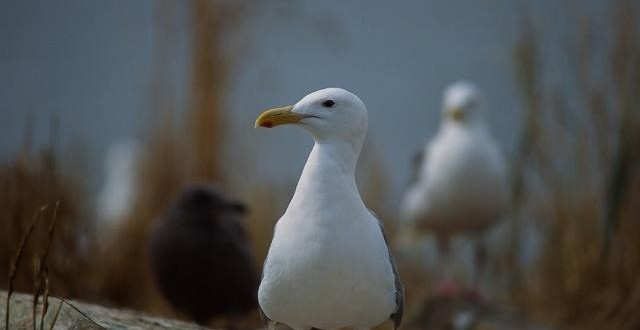UBC researchers are out with a new study that says the seagull population in the Strait of Georgia has fallen by 50% compared to the 1980′s.
Researchers collected 100 years of data on population numbers of Glaucous-winged Gulls, the most common seagull species found in the Lower Mainland, Victoria, Nanaimo and elsewhere in the region. They found that the population increased rapidly beginning in the early 1900s, but started to drop after the mid-1980s, with their work pointing to diet as one factor in the decline of the bird’s health.
“These birds are the ultimate generalist — they can eat whatever’s around,” says the study’s lead author Louise Blight. “If they are experiencing a population decline, the gulls may be telling us that there have been some fairly profound changes to local marine ecosystems.”
Gulls historically relied on almost a purely marine diet, largely eating small fish and shellfish, but over time moved to a diet that incorporated more foods found on land, such as garbage and earthworms.
“They’re presumably turning to land-based prey sources because the things they prefer to eat are less available,” says Blight, explaining that there are now likely both fewer forage fish and a lower diversity of these fish in coastal waters than there was prior to industrial fishing, and that gulls need fish foods to breed successfully.
“Gulls are an indicator of our coastal marine ecosystems,” she says. “We need to be restoring ecosystems along the coast, and that includes restoring fish populations.”
Study co-author Peter Arcese, FRBC chair of conservation biology in the Faculty of Forestry, says reductions in marine food abundance and quality help explain why the population of two other bird species in the region, Marbled Murrelets and Western Grebes, have declined by 90 per cent since the 1950s and 70s, respectively.
“Our studies of marine bird populations in the Salish Sea show that restoration and management plans for the region can be improved by incorporating historical information on the causes of ecosystem change,” says Arcese.
Canadajournal/Press Releases
 Canada Journal – News of the World Articles and videos to bring you the biggest Canadian news stories from across the country every day
Canada Journal – News of the World Articles and videos to bring you the biggest Canadian news stories from across the country every day




It used to be standard practice for BC Ferries to dump their trash overboard during their sailings. I’ve witnessed this numerous times, and there was always a large flock of seagulls following the ferry. Perhaps the study could look at the contribution this food source made to the gull population and the effect when BC Ferries eventually banned the practice.
Fewer food stealing, monster pooping seagulls? Thats a good thing!